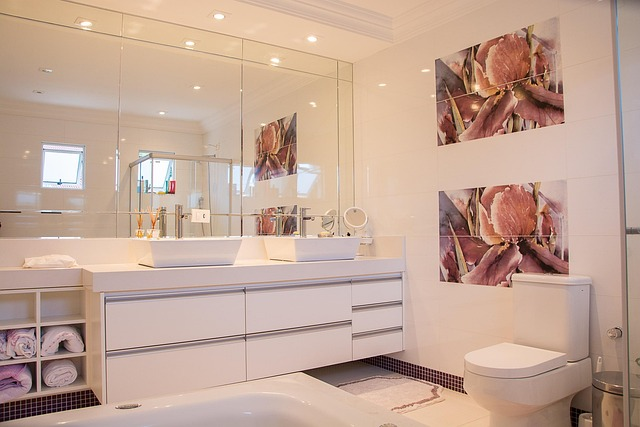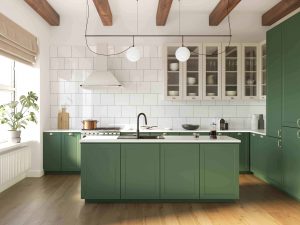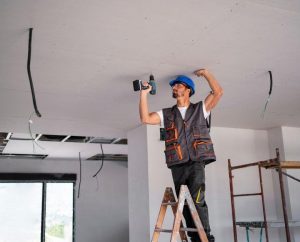How Your Plumber Can Transform Your Home in 6 Easy Ways

If you have recently moved into an older home, you may be seeking effective ways to enhance the functionality of your new space. One of the more significant ways to achieve this is by upgrading dated plumbing.
The blocked drain plumber Melbourne locals rely on is well-equipped to replace older and potentially hazardous plumbing fixtures and fittings. If you’re still on the fence about replacing items that aren’t technically broken, then this post is a must-read.
Common Reasons to Upgrade Your Plumbing
Many Australians may regard replacing non-broken components as a waste of money. After all, why fiddle with something that isn’t leaking or causing any issues in your home? The short answer is that components age and become less effective.
Here’s a more detailed breakdown of the reasons why you should consider a plumbing upgrade:
- Makes your home more efficient: Modern fixtures and appliances have been designed to be more energy efficient, allowing you to save money on your energy bills.
- Improves functionality: Spaces such as the laundry room, kitchen, and bathroom often benefit from a few extra features to accommodate modern living. Additional taps or sinks are top fixtures to consider in this regard.
- Increases safety in your home: Older, worn plumbing fixtures often lead to issues such as leaks or moisture build-up. This, in turn, leads to bacteria and mould growth. Hidden leaks can also lead to damage to the home’s foundation. Modern fixtures will reduce the likelihood of this.
Plumbing Upgrades are Easier than You Think
If you’re considering a plumbing upgrade, you might be wondering where to start. This is especially the case if there are several components needed to modernise your plumbing system.
Fortunately, your plumbing team will do a comprehensive assessment of your existing system and make recommendations based on what your home needs. A few of the more common issues they may recommend are listed below.
1. Replace Older Plumbing Pipes
Many people are unaware that older plumbing pipes are made of galvanised iron, lead, or even polybutylene. These materials can pose significant health risks over time and will be one of the top items that your plumber will recommend for replacement.
2. Upgrade Bathroom and Kitchen Fixtures
Older fixtures may be working, but will already be showing signs of normal wear. Replacing older taps and fixtures not only improves the functionality in a space but will also improves the overall aesthetic.
Your plumber will recommend that you opt for eco-friendly tapware that is energy-efficient and also makes your home more sustainable. Dual-flush toilets, low-flow showerheads, and tankless water heaters are also highly effective for conserving water.
3. Replace Older Toilets
Toilets are often on the list of items that homeowners only replace when they absolutely have to. However, your plumber will be quick to advise you that a new toilet will save you money and help you conserve water.
Here are a few top indicators that your toilet should be replaced:
- Leaks
- Constant running water
- Weak flushing toilet
- Frequent blockages
4. Consider Adding a Dishwasher to Your Home
If you don’t already have a dishwasher, it may be a good idea to consider investing in one. Handwashing your dishes often uses as much as five times more water and energy than a modern dishwasher would. Your plumber will also ensure that your dishwasher is installed correctly and safely. This also ensures that the unit is as energy-efficient as possible.
5. Install a Rainwater Harvesting System
You may not know this, but your local plumber will also be able to install a rainwater harvesting system for your home. While this doesn’t directly affect your indoor plumbing, it can go a long way toward helping you conserve water.
The rainwater system will be connected to your existing guttering system and can even be linked to your sprinklers, toilets, and garden taps. You will then easily be able to use the harvested rainwater, allowing you to see a significant saving in your long-term water bill. Your plumber can make a recommendation based on your home’s needs and rainfall in your area.
6. Have Your Water Heater Assessed
It’s also a good idea to have your water heater inspected. Older units should be upgraded to modern, more energy-efficient models. A huge advantage of upgrading your water heater is that you can opt for a larger unit to accommodate your family’s needs.
This is especially the case if you have moved into a new home with a smaller tank than you’re used to, or your family is still growing. It’s a quick and effective way to ensure that no one has to have a cold shower in the morning. Speak to your plumber about the various options available for your needs and your budget.
Final Thoughts
Upgrading your home plumbing is an effective way to modernise your home. Not only will you improve your home’s energy efficiency, but you will also be ensuring that older components aren’t causing unseen structural damage. Speak to your local plumber to get the process started. You’ll be glad you did!



